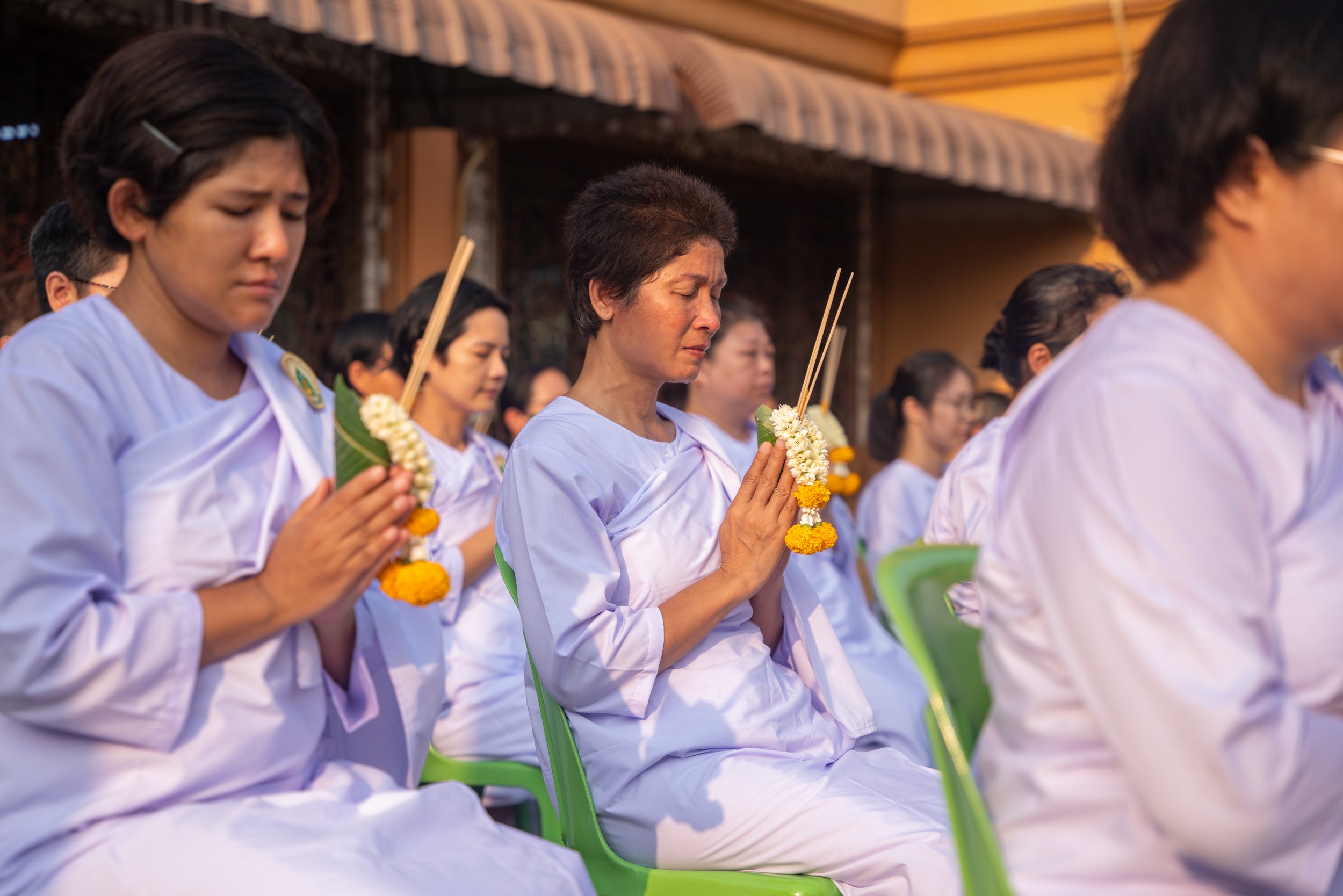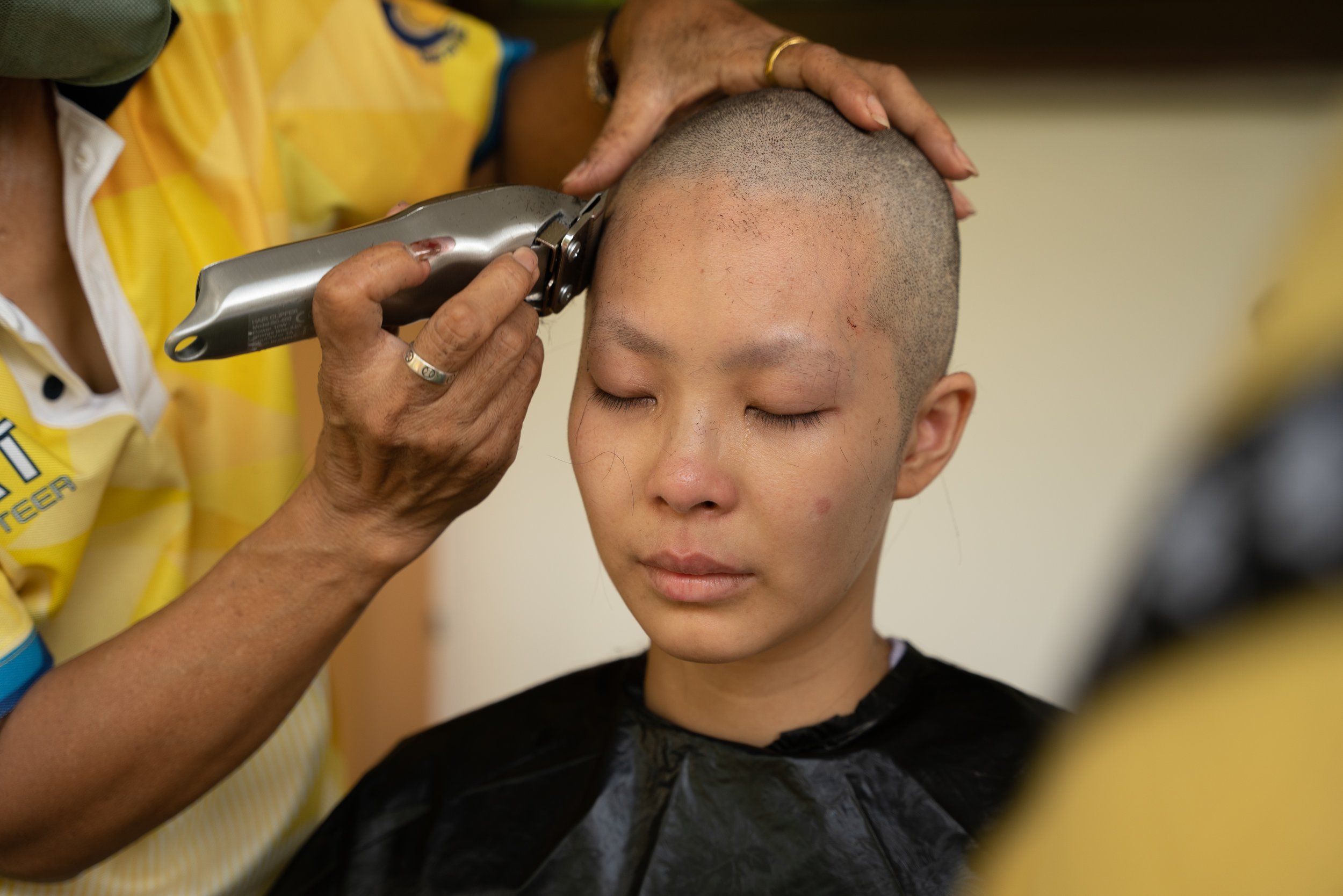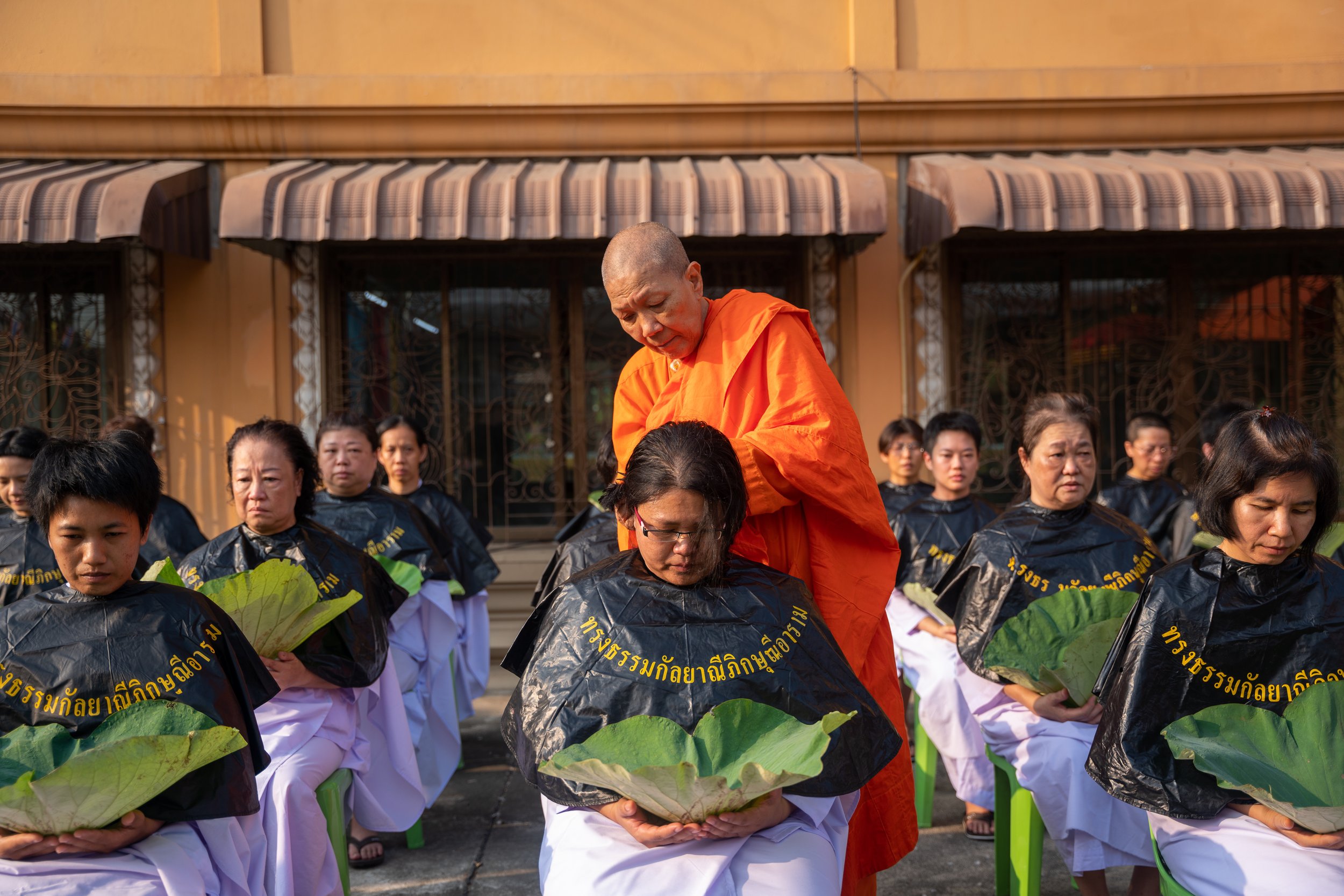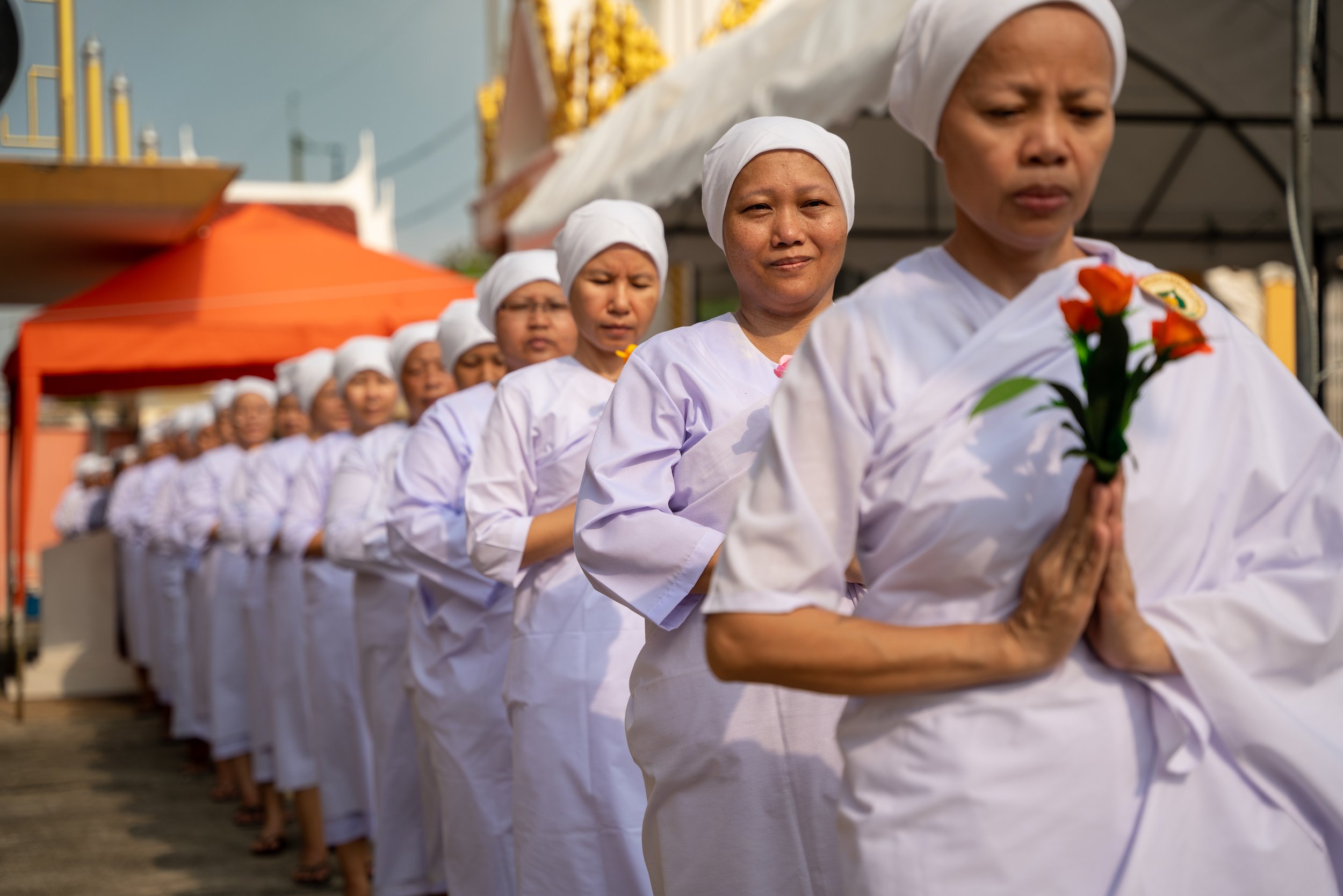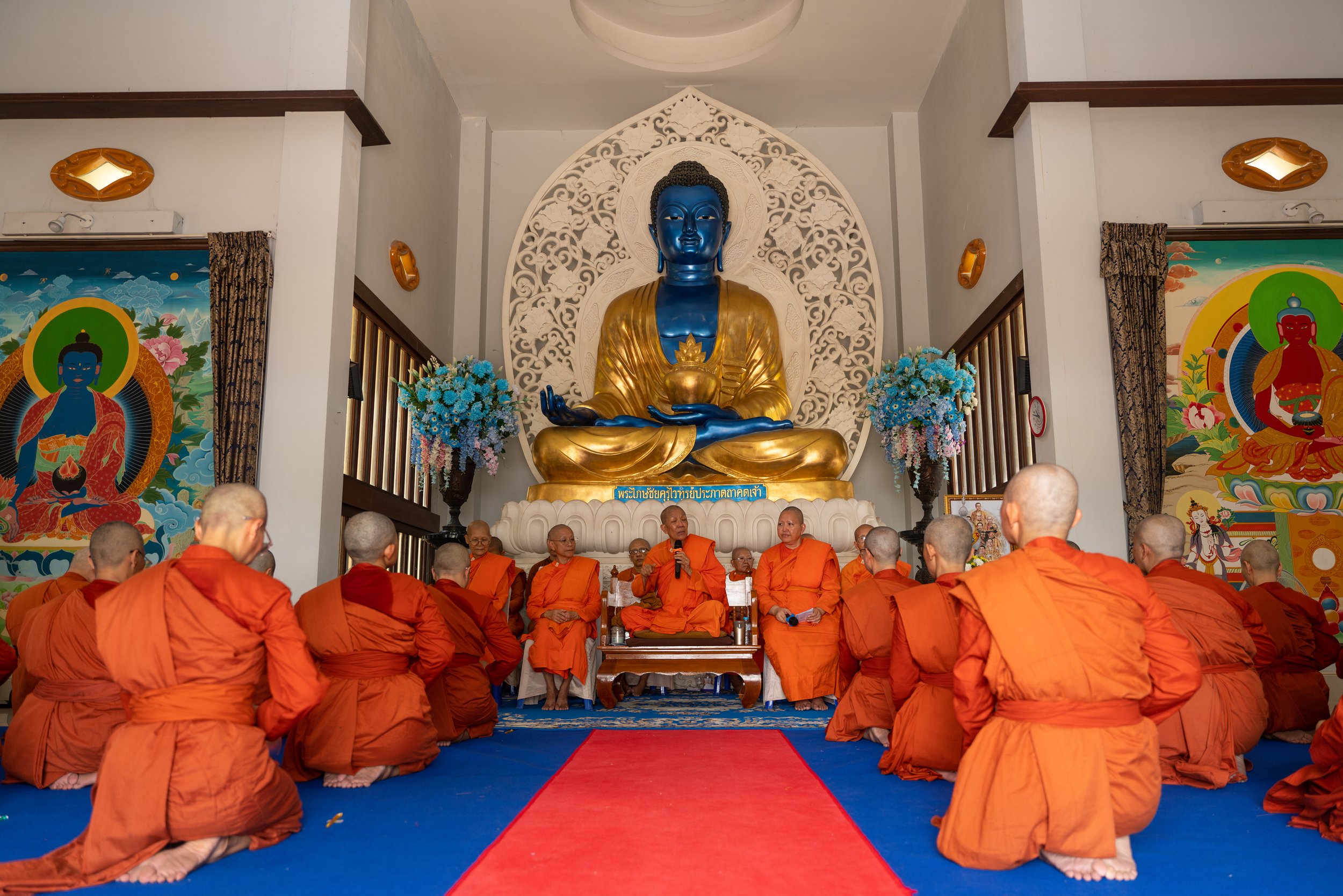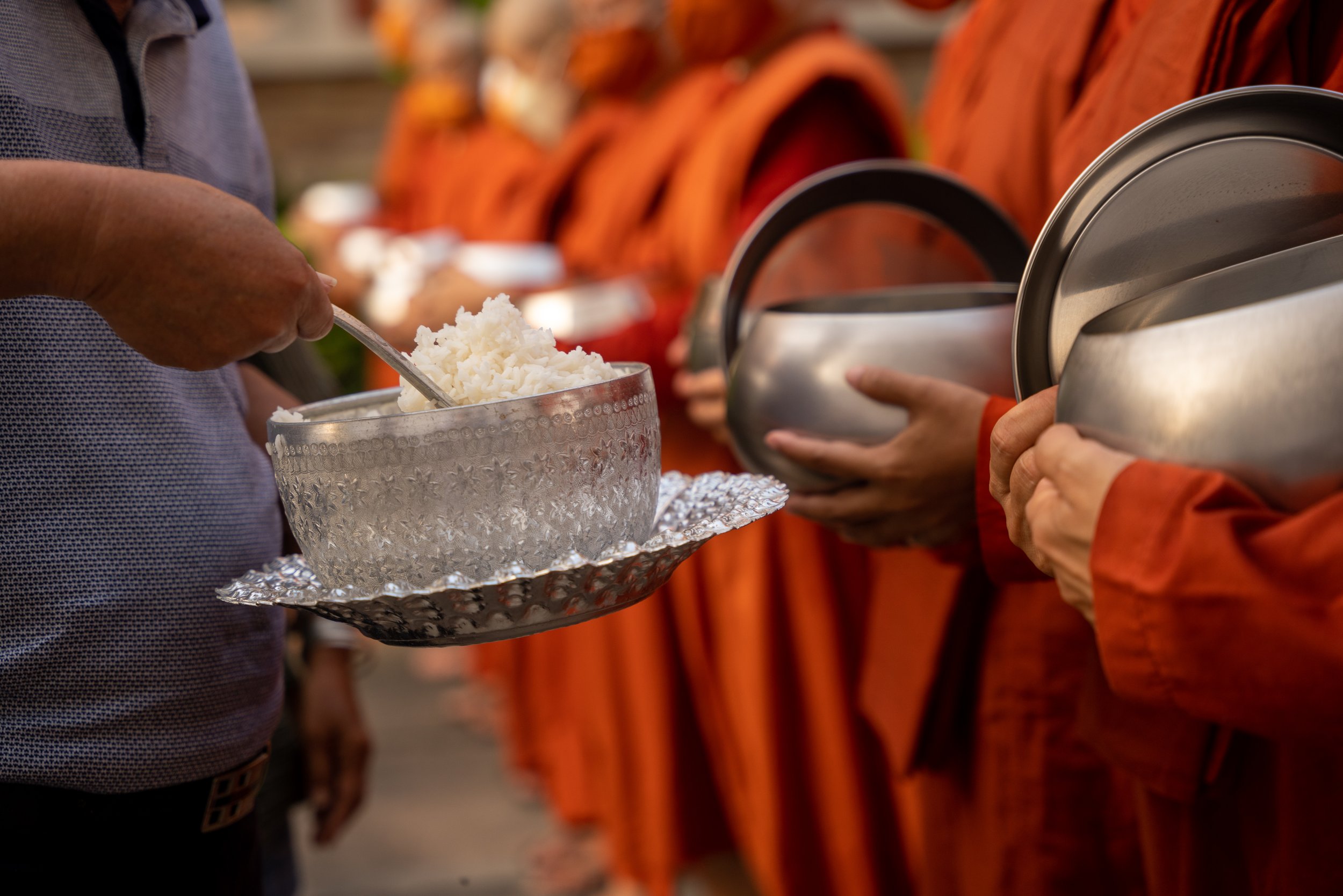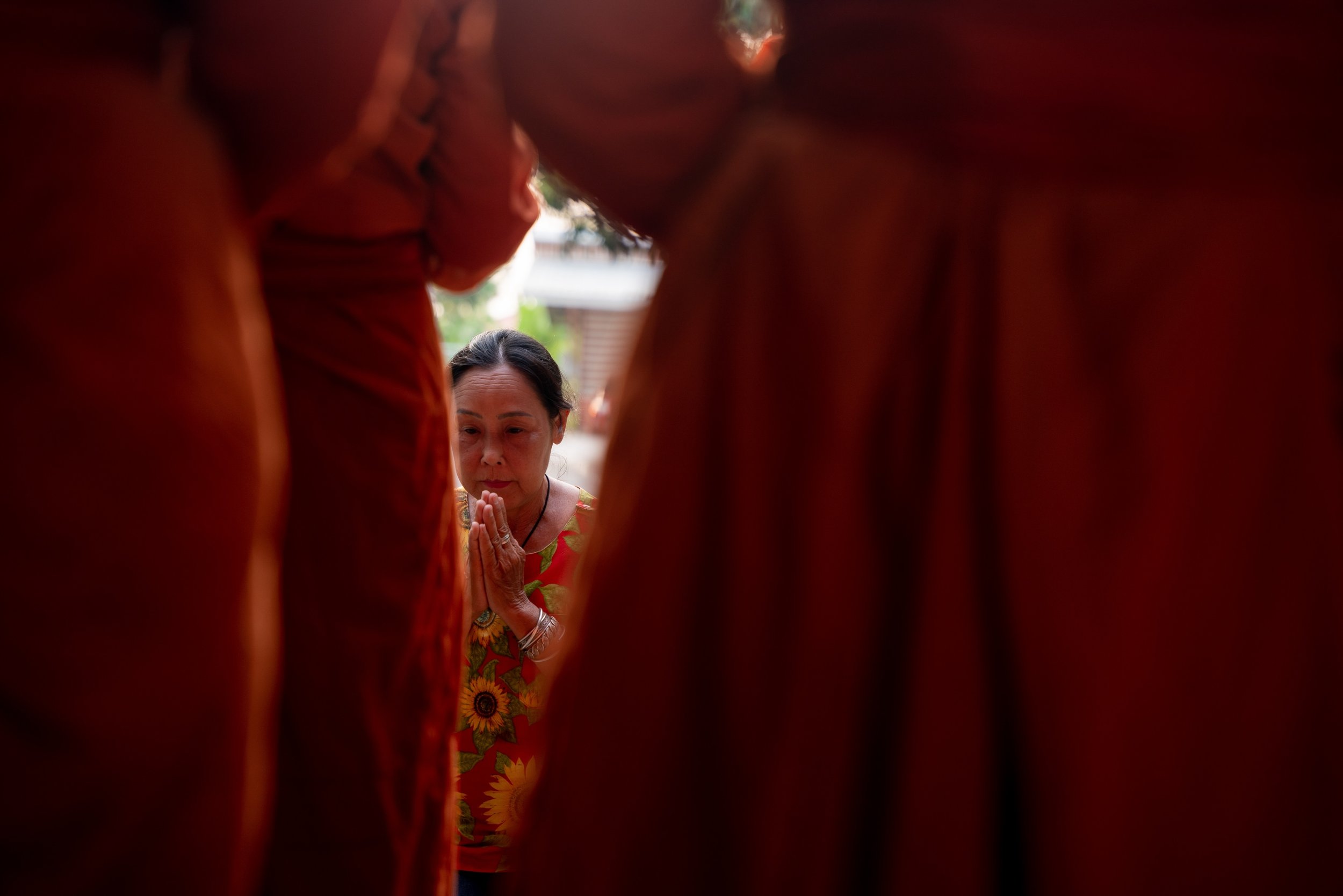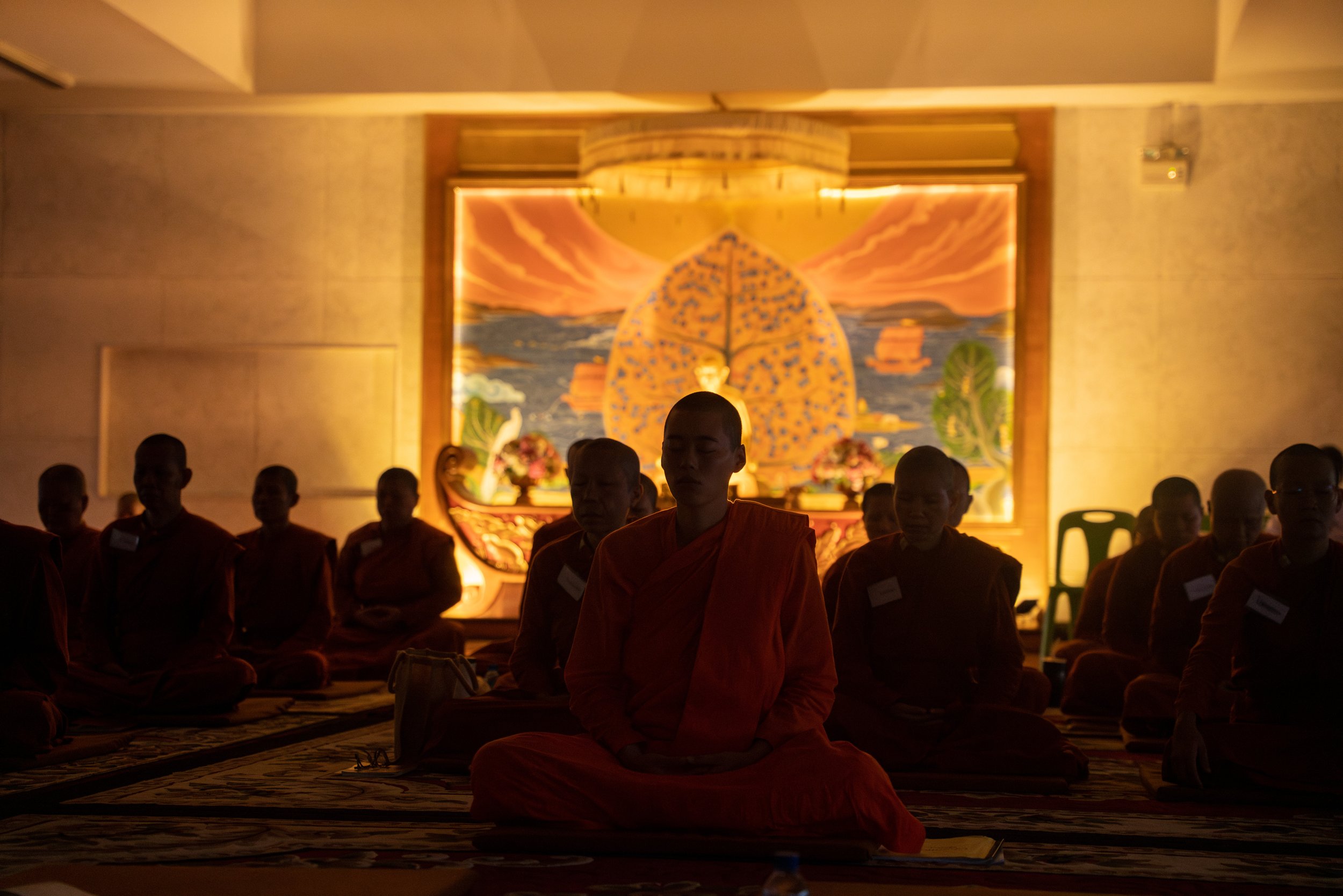Thai female monks want recognition
for Trouw
Male monks dressed in orange robes are a familiar sight on the streets of Thailand. You’ll hardly see women in orange; ordaining them has been forbidden since 1928. One progressive female monk is changing that. ‘Buddha was the first feminist’
At Songdhammakalyani Monastery, an hour outside Bangkok, 31 women sit in the garden. They are dressed in white robes, their hands folded and sweat is running down their faces. It is only eight in the morning but the heat is already oppressive. As family members look on emotionally, volunteers shave off the women's hair and eyebrows. Then the group walks in a straight line to the temple, where the women take on the 10 Buddhist precepts. They receive an orange robe, an alms bowl and a new name. Leaving worldly life behind for a while, they are now temporarily ordained.
Theravada Buddhism is Thailand's largest religion, with more than 90 percent of the population following this movement. Within Thai tradition, temporary ordination is a norm for men; most of them do it at least once in their lifetime. The stay can last several days or months. It is a way to strengthen one's connection to the faith, learn about disciplined monastic life, and generate merit for oneself and one's family. Ordination of female monks, bhikkhunis, is not allowed. So the abbess of Songdhammakalyani Monastery, Dhammananda, decided to fly to Sri Lanka in 2003 to become the first Thai woman to be ordained as a Theravada monk.
Buddha was a rebel
The outcry in her homeland was intense. She was blackballed in the media, threatened and a government investigation was launched against her. "The Buddha was also a rebel in his time," laughs the 79-year-old. "He turned the whole social system upside down with his teachings. Even now we are not recognized as female monks, let alone back then." In the 700 years since Theravada Buddhism took root in Thailand, there have never been female monks in the country. "The male monks, bhikkhus, have done nothing in all these years to change that," says the abbess. "Because you need female monks to teach women and they have to be part of the ordination process, they said there was no way to bring this order of female monks to life. So we had to find a way ourselves."
The fact that bhikhhuni are not recognized has mostly practical implications. For boys and men in Thailand, besides it being a spiritual path, life in a monastery is also a way out of poverty. Monks are supported by the government; they receive free education, there is a special hospital for them. Men's monasteries receive financial aid and do not pay taxes. All benefits women have to miss out on.
Off balance
Before her ordination, Dhammananda went through life as Professor Chatsumarn Kabilsingh. Even then, she was a respected voice in the debate about women in Buddhism. She worked at a prestigious university in Bangkok for 27 years and wrote dozens of books on modern issues within the faith. She was the first woman to host a Buddhist talk show on Thai television.
That study and knowledge of the subject gave her the confidence to start a movement of ordaining women. Since her own ordination, about 300 Thai women have become monks. "The Buddha was the first feminist," she says. "He said that women have the same capacity to become enlightened as men. And he was clear that the Buddhist community, the sangha, should consist of four pillars: male and female monks and male and female followers. Because of the lack of female monks, the community is like a chair missing a leg: off balance.”
In other Theravada countries such as India and Sri Lanka, the first women in this lineage were ordained in 1996 and 1998, respectively. In contrast, within Mahayana Buddhism in countries such as China, Japan, Vietnam and South Korea, female monks have coexisted with their male counterparts for centuries. The first time this spiritual inequality was brought up in Thailand was in 1928, when a Thai politician and Buddhist activist had his two daughters ordained. This caused such a fuss that the highest governing body of Buddhism in the country wrote a rule that Thai male monks were absolutely prohibited from ordaining women. To this day, this 1928 ruling is cited.
When Dhammananda organized a women's ordination in 2014, the governing body issued an edict reaffirming the ban on female ordinations and annulling the ceremony. The large temporary ordination she organizes twice a year, in April and December, at the monastery is not covered by this regulation. The women are not ordained monks, but samaneri, novices. They must then study for at least two years before they are allowed to take higher ordination. For that, they have to go to India or Sri Lanka. More than a thousand women have already been ordained as novices at Songdhammakalyani Monastery. During the nine-day ordination, they are not only taught about Buddhism and monastic life, they also learn how to defend themselves in the debate over the validity of female monks.
Younger sister
According to the scriptures, Gautama Buddha ordained his aunt (also foster mother) Mahapajapati Gotami as the first bhikkhuni. Many women followed. Thirteen of these enlightened female monks he is said to have appointed as disciples; their statues cast in gold adorn the meditation hall of the women's monastery. But there is evidence that according to the Buddha, even when ordained, women are not equal to men. Dhammananda says: "He had to take into account the society of the time, but male and female monks have equal status. Or well, there is a slight difference, like between an older brother and a younger sister."
That the majority of women go back to their normal lives after nine days is not something the abbess sees as negative. "Even in this short time, seeds are planted and it helps change the mindset of people outside the monastery. If every woman who participates tells five others about the existence of female monks, we are another step closer towards recognition."

